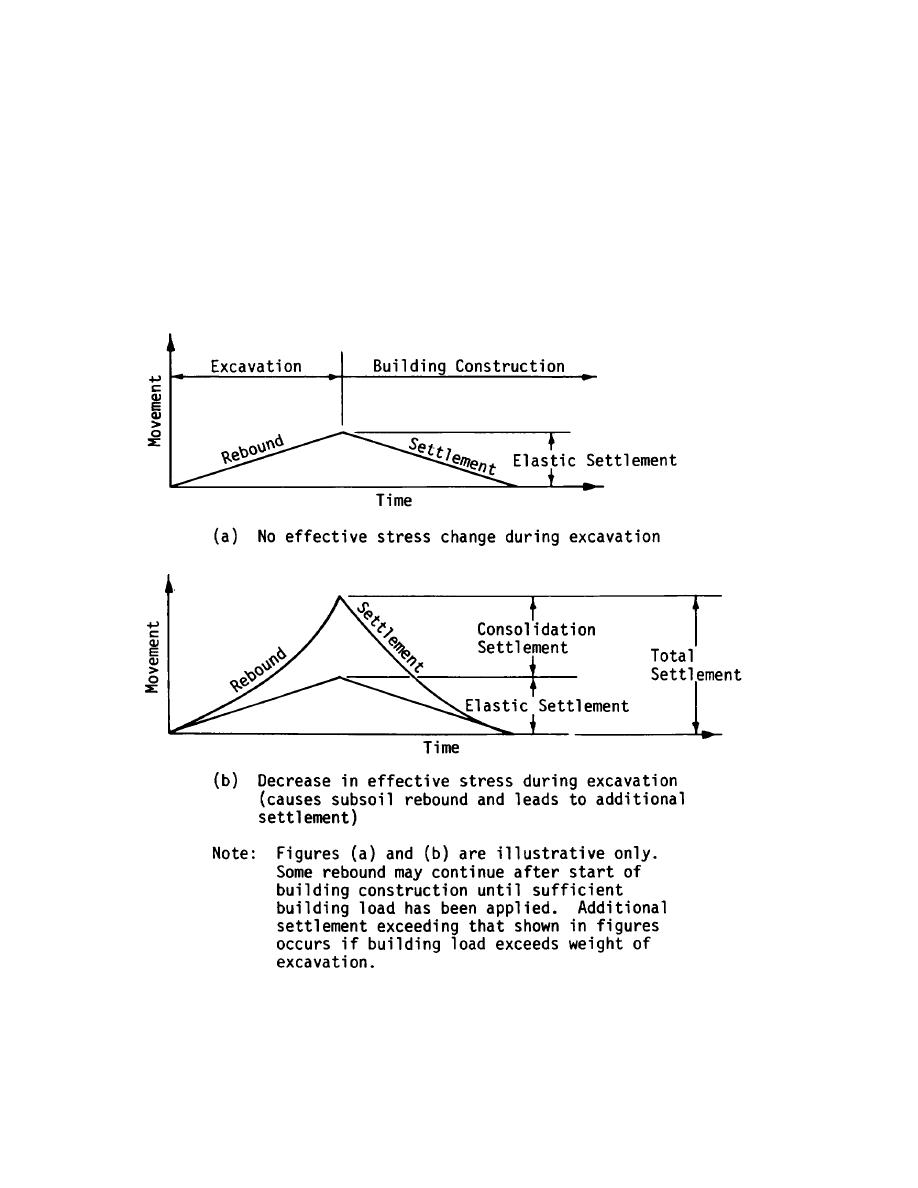
TM 5-818-1 / AFM 88-3, Chap. 7
suiting loss of ground.
To avoid this possibility,
heave can sometimes be achieved by an educator-type
investigate-
wellpoint system. Permitting a controlled rise of the
(1) Potential for plastic flow, i.e.,
groundwater level as the building loan is applied acts to
relationship between shear stress and shear strength.
reduce effective stresses and counteracts the effect of
(2) Sequence of placing wall bracing.
the added building load.
Sequential excavation is
(3) Depth of penetration of sheeting below
accomplished by removing soil to final grade via a series
base of excavation.
of successive trenches. As each trench is opened, the
g. Two commonly used procedures to control
foundation element is poured before any adjacent trench
bottom heave are dewatering and sequential excavation
is opened. This procedure recognizes the fact that more
of the final 5 feet or more of soil. Groundwater lowering
heave occurs in the later excavation stages than in
increases effective stresses and may reduce heave.
earlier stages and is frequently used in shales.
Where subsoil permeabilities are not large, a deep and
h. The tilting of a compensated foundation can
economical lowering of the groundwater to minimize
occur if structural loads are not symmetrical or if soil
U. S. Army Corps of Engineers
Figure 11-1. Effect of pore pressure dissipation during excavation and settlement response.
11-2



 Previous Page
Previous Page
